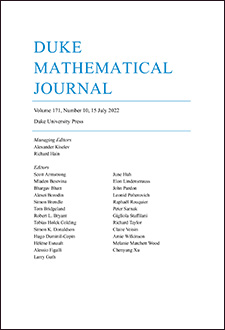Abstract
We consider a function $\phi\in L\sp 2(\mathbb {R}\sp d)$ such that $\{| \det(D)|\sp {1/2}\phi(Dx-\lambda) : D\in \mathscr {D},\lambda\in \mathscr {T}\}$ forms an orthogonal basis for $L\sp 2(\mathbb {R}\sp d)$, where $\mathscr {D}\subset M\sb d(\mathbb {R})$ and $\mathscr {T}\subset \mathbb {R}\sp d)$. Such a function $\phi$ is called a wavelet with respect to the dilation set $\mathscr {D}$ and translation set $\mathscr {T}$. We study the following question: Under what conditions can a $\mathscr {D}\subset M\sb d(\mathbb {R}$ and a $\mathscr {T}\subset \mathbb {R}\sp d)$ be used as, respectively, the dilation set and the translation set of a wavelet? When restricted to wavelets of the form $\phi=\check{\chi}\Omega$, this question has a surprising tie to spectral sets and their spectra.
Citation
Yang Wang. "Wavelets, tiling, and spectral sets." Duke Math. J. 114 (1) 43 - 57, 15 July 2002. https://doi.org/10.1215/S0012-7094-02-11413-6
Information





